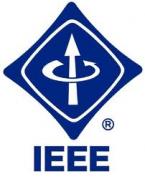New IEEE Standard - Superseded.
Identity assertion, role gathering, multilevel access control, assurance, and auditing are provided by the Biometric Open Protocol Standard (BOPS). The BOPS implementation includes software running on a client device (smartphone or mobile device), a trusted BOPS server, and an intrusion detection system. The BOPS implementation allows pluggable components to replace existing componentsa?? functionality, accepting integration into current operating environments in a short period of time. The BOPS implementation provides continuous protection to the resources and assurance of the placement and viability of adjudication and other key features. Accountability is the mechanism that proves a service-level guarantee of security. The BOPS implementation allows the systems to meet security needs by using the application programming interface. The BOPS implementation need not know whether the underlying system is a relational database management system or a search engine. The BOPS implementation functionality offers a a??point-and-cuta?? mechanism to add the appropriate security to the production systems as well as to the systems in development. The architecture is language neutral, allowing Representational State Transfer (REST), JavaScript Object Notation (JSON), and Secure Sockets Layer (SSL) or Transport Layer Security to provide the communication interface. The architecture is built on the servlet specification, open SSLs, Java, JSON, REST, and an open persistent store. All tools adhere to open standards, allowing maximum interoperability.
Document identifier
IEEE 2410-2015
Title
IEEE Standard for Biometric Open Protocol
IEEE Category
Communication Equipment
Publication date
2015-11-20
International Relationship
History of version
IEEE 2410-2019*IEEE 2410-2015 * IEEE 2410-2019 * IEEE 2410-2017 * IEEE 2410-2015
| Price |
61 vnd |



 IEEE 2410-2015
IEEE 2410-2015